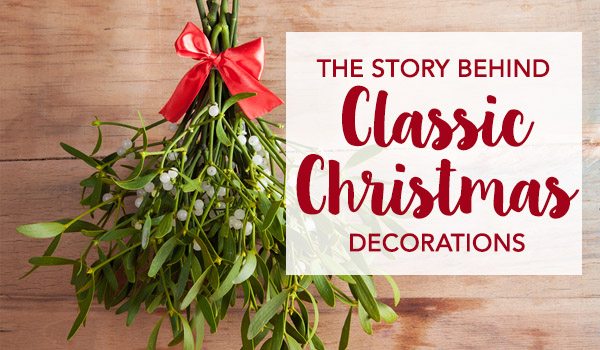
Decorating the Christmas tree, eating a candy cane, or stealing a kiss under the mistletoe are all timeless and fun Christmas traditions. But imagine you had an alien visit you from outer space, right in the middle of December. Could you explain all these weird things that we do? Take a look at the real story behind some of your favourite holiday symbols!
Christmas Tree
Decorating and celebrating around the Christmas tree is a widely cherished holiday traditions, it’s hard to imagine Christmas was ever celebrated without it. But where did it come from?
The earliest recorded versions of an indoor tree appear to originate over 500 years ago in Germany. In the early Renaissance, people would decorate pine or fir trees with apples, roses, candies and colored paper.
However, it became widespread by the mid-19th century, due to British monarch Queen Victoria who adored the Christmas tree. In 1848, a newspaper report of her elaborate Christmas tree in Windsor Castle popularised the decoration across the British upper class. In the US and Britain, a Christmas tree decorated with lights, baubles and tinsel became a staple in most Christian homes by the 20th century.
Mistletoe
Mistletoe is a plant that grows on a range of trees, including willow, apple and oak, but is most well known for being hung around the home during the festive season
This tradition stems back to the time of the ancient Druids, who believed that mistletoe possessed mystical powers which could ward off evil spirits and bring goodluck to a household. Traditionally, mistletoe should never touch the ground from the point it is cut and its removal from the home (it is supposed to be the last greenery to leave the house after the Christmas season).
Mistletoe is most commonly known these days as being the perfect decoration under which to plant a kiss on a loved one. This romantic associated initially originated under Norse mythology, where mistletoe was used as a symbol of love and friendship. By the 18th century, the practice of kissing under the bush became a popular tradition in Britain and spread from there. Any man and woman who met under the mistletoe were obliged to kiss and after each kiss a berry would be plucked from the bush. It was believed that once the bush was shed of all its berries, the power of it to demand a kiss no longer exists. So…if you’re hanging a bush of mistletoe this year, make sure it’s a fruity one!
Christmas Stocking
There are a multitude of stories that serve as possible explanations for the origin of the Christmas stocking, but the most popular begins with the tale of a poor, old man with three beautiful daughters who could not afford their dowries, thus preventing them from marrying. St Nicholas heard this story when he was riding through the village. Knowing that the old man would not accept charity, one night St Nicholas crept down the chimney to find stockings that the daughters had hung near the fireplace to dry. He placed a bag of gold into each of these stockings. The next morning, the three daughters and their father woke up to discover this delightful surprise. As such, our continued tradition of hanging a stocking and waking to find it filled with gifts reflects the delightful surprise that was discovered by this man and his three daughters.
Candy Cane
The tale of the Candy Cane will be familiar to any parent who has ever bribed their child with food. In 1670, a German choirmaster had a particularly raucous group of children in his choir. Searching for a way to keep the kids quiet in church during Christmas Eve ceremonies, he asked the local sweet maker to make sweet sticks for the children. In order to justify the giving of candy during worship, he had the sweet maker add a hook-shape to the tip of each stick in order to resemble the hooked canes of the three shepherds, and the red and white colours were used to resemble the Christian belief of the sinless life of Jesus. Soon enough, these delicious treats became a popularised tradition all over Europe, and now the world!
Poinsettia
Poinsettia’s association with Christmas hails from Mexico, where it is believed a poor young girl, who couldn’t afford a gift to celebrate the birth of Jesus, was visited by angels. These angels inspired her to pick roadside weeds to be placed in front of the church alter. Soon enough, these weeds blossomed into beautiful crimson flowers. It is recognised that the star shape of the lead represents the Star of Bethlehem and the red embodies the blood sacrifice of Christ’s crucifixion. As such, poinsettia developed a special symbolism and in Mexico since the 17th century, friars have incorporated these glorious flowers into their traditional Christmas festivities – a beautiful decoration that has permeated homes around the world!











